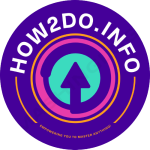Understanding the Importance of SEO
To grasp the significance of SEO, we need to understand how search engines work. When a user enters a query into a search engine, it scours the web to find the most relevant and authoritative results. SEO helps your website rank higher in these search results, leading to increased visibility and organic traffic. By optimizing your website for search engines, you are making it easier for potential customers to find your business online.
Keyword Research: The Foundation of SEO
Keywords are the foundation of any successful SEO strategy. These are the words and phrases that users type into search engines when looking for information, products, or services. Conducting thorough keyword research allows you to identify the most relevant and high-value keywords to target. Tools like Google Keyword Planner, SEMrush, and Moz Keyword Explorer can assist you in finding keywords with high search volumes and manageable competition.
On-Page Optimization Techniques
On-page optimization involves optimizing the elements on your website to improve its visibility in search results. Some key on-page optimization techniques include:
1. Title Tags
Title tags are HTML elements that define the title of a webpage. They appear as clickable headlines on search engine result pages. Ensure your title tags are concise, descriptive, and include relevant keywords.
2. Meta Descriptions
Meta descriptions provide a brief summary of a webpage's content. While they don't directly impact rankings, they play a crucial role in attracting users to click on your link. Craft compelling meta descriptions that include relevant keywords and entice users to visit your website.
3. Header Tags
Header tags (H1, H2, H3, etc.) are HTML tags that structure the content on your webpage. Use them to break up your content into sections and make it more scannable for both users and search engines. Include relevant keywords in your header tags to signal the topic of each section.
4. URL Structure
Optimize your URL structure by creating descriptive and user-friendly URLs. Avoid long, complex URLs that provide little information about the page's content. Include relevant keywords in your URLs to improve their visibility in search results.
Creating High-Quality Content
The saying "Content is king" holds true in the realm of SEO. High-quality content not only attracts and engages users but also signals authority to search engines. When creating content for your website, keep the following tips in mind:
1. Original and Unique Content
Ensure that your content is original and unique. Plagiarized or duplicated content can harm your website's rankings. Create valuable and informative content that addresses the needs and interests of your target audience.
2. Keyword Optimization
Integrate relevant keywords naturally throughout your content. Avoid keyword stuffing, as it can lead to penalties from search engines. Aim for a keyword density of around 1-2% and focus on providing value to your readers.
3. Readability and Formatting
Make your content easy to read and digest. Use short paragraphs, subheadings, bullet points, and numbered lists to break up your content. Use bold and italic formatting to highlight important information.
4. Multimedia Elements
Incorporate multimedia elements such as images, videos, and infographics into your content. These elements enhance the user experience and make your content more shareable, increasing its visibility.
Optimizing Website Structure and Navigation
An organized and user-friendly website structure is essential for both users and search engines. Follow these best practices to optimize your website's structure and navigation:
1. Logical Hierarchy
Organize your website's content into a logical hierarchy. Use categories and subcategories to group related pages together. This helps search engines understand the structure and context of your website.
2. Internal Linking
Implement internal linking to connect related pages within your website. This improves navigation, distributes link equity, and helps search engines discover and index your content more effectively.
3. User-Friendly Navigation Menu
Design a clear and intuitive navigation menu that allows users to easily navigate your website. Use descriptive labels for menu items and ensure that your menu is accessible across all devices.
Meta Tags and Meta Descriptions
Meta tags provide additional information about a webpage to search engines. While they don't directly impact rankings, they can influence how your website appears in search results. Two important meta tags are:
1. Meta Keywords
Meta keywords were once a significant factor in SEO, but their influence has diminished over time. Nevertheless, including relevant keywords in your meta keywords tag can still provide some benefit.
2. Meta Descriptions
As mentioned earlier, meta descriptions provide a summary of a webpage's content. Craft compelling meta descriptions that entice users to click on your link. Include relevant keywords and maintain a length of around 150-160 characters.
The Power of Backlinks
Backlinks are links from other websites that point to your website. They are a crucial factor in determining your website's authority and trustworthiness. Here are some strategies to acquire high-quality backlinks:
1. Content Marketing
Create valuable and shareable content that naturally attracts backlinks. Informative blog posts, comprehensive guides, and infographics are excellent content formats for attracting backlinks from other websites.
2. Guest Blogging
Contribute guest posts to authoritative websites in your industry. Include a relevant backlink to your website within the guest post. This not only helps build backlinks but also establishes your expertise and authority in the field.
3. Influencer Outreach
Identify influential individuals or brands in your industry and reach out to them. Offer to collaborate on content or request their input on a topic. When they mention or link to your website, it boosts your backlink profile.
Technical SEO: Ensuring a Smooth User Experience
Technical SEO focuses on optimizing the technical aspects of your website to enhance user experience and search engine crawlability. Some key technical SEO considerations include:
1. Website Speed
Ensure that your website loads quickly. Slow-loading websites can lead to higher bounce rates and lower search engine rankings. Compress images, minify code, and leverage caching to improve your website's speed.
2. Mobile-Friendliness
With the increasing use of mobile devices, it's essential to have a mobile-friendly website. Optimize your website's design and functionality for mobile devices, ensuring that it is responsive and provides a seamless user experience.
3. XML Sitemap
Create an XML sitemap that lists all the pages on your website. This helps search engines discover and index your content more efficiently. Submit your sitemap to search engines for better crawlability.
4. SSL Certificate
Implement an SSL certificate to secure your website and enable HTTPS. This not only protects user data but also boosts your website's trustworthiness and search engine rankings.
Mobile Optimization
Mobile optimization is no longer an option—it's a necessity. With the majority of internet users accessing websites through mobile devices, optimizing your website for mobile is crucial. Consider the following tips for mobile optimization:
1. Responsive Design
Implement a responsive design that automatically adjusts the layout and elements of your website based on the user's device. This ensures a seamless and user-friendly experience across different screen sizes.
2. Mobile-Friendly Content
Create content that is easily readable on smaller screens. Use larger fonts, shorter paragraphs, and concise headings to make your content more mobile-friendly. Test your website on different devices to ensure optimal display.
3. Accelerated Mobile Pages (AMP)
Consider implementing Accelerated Mobile Pages (AMP) to improve the loading speed of your mobile pages. AMP is a framework that prioritizes speed and performance, providing a smoother browsing experience for mobile users.
Local SEO: Targeting Local Audiences
If you have a local business or serve a specific geographical area, optimizing for local SEO is essential. Local SEO helps your business appear in local search results and drives foot traffic to your physical location. Here are some local SEO strategies:
1. Google My Business (GMB) Optimization
Claim and optimize your Google My Business listing. Provide accurate and up-to-date information about your business, including address, phone number, business hours, and customer reviews.
2. Local Citations and Directories
Submit your business information to local directories and citation sites. Ensure consistency across all platforms to establish trust and credibility with search engines.
3. Online Reviews and Ratings
Encourage customers to leave reviews and ratings for your business. Positive reviews not only attract more customers but also signal trust and authority to search engines.
Social Media and SEO
While social media signals may not directly impact search engine rankings, they can indirectly influence SEO. Here's how you can leverage social media for SEO benefits:
1. Increased Visibility and Brand Awareness
Maintain an active presence on social media platforms to increase your brand's visibility and reach. Engage with your audience, share valuable content, and encourage social sharing to expand your online presence.
2. Social Sharing and Backlinks
When your content is shared on social media platforms, it increases the likelihood of attracting backlinks from other websites. Foster a social sharing culture by integrating social sharing buttons on your website.
3. Social Media Profiles in Search Results
Search engines often display social media profiles in their search results. Optimize your social media profiles with relevant keywords and maintain consistent branding across all platforms.
User Engagement Metrics
User engagement metrics are indicators of how users interact with your website. While not direct ranking factors, they can provide insights into your website's performance and user satisfaction. Some important user engagement metrics include:
1. Bounce Rate
Bounce rate measures the percentage of users who leave your website after viewing only one page. A high bounce rate may indicate that your website's content or user experience needs improvement.
2. Time on Page
Time on page reflects how long users spend on a particular page of your website. A higher average time on page suggests that your content is engaging and valuable to users.
3. Click-Through Rate (CTR)
CTR measures the percentage of users who click on your website's link in search results. A higher CTR indicates that your website's title and meta description are compelling and relevant to users' queries.
Measuring and Analyzing SEO Performance
To gauge the effectiveness of your SEO efforts, it's crucial to measure and analyze your website's performance. Here are some tools and metrics to consider:
1. Google Analytics
Google Analytics provides comprehensive data about your website's traffic, user behavior, conversions, and more. Set up Google Analytics to track key metrics and gain valuable insights into your SEO performance.
2. Keyword Rankings
Monitor your keyword rankings to track your website's visibility in search results. Tools like SEMrush, Moz, and Ahrefs can help you track keyword rankings and identify areas for improvement.
3. Organic Traffic
Track the amount of organic traffic your website receives over time. Analyze trends and identify the sources and pages that drive the most organic traffic.
Common SEO Mistakes to Avoid
While optimizing your website for search engines, it's important to avoid common SEO mistakes that can harm your rankings. Here are a few mistakes to steer clear of:
1. Keyword Stuffing
Overusing keywords in your content or meta tags can lead to keyword stuffing, which is frowned upon by search engines. Focus on natural and contextual use of keywords.
2. Thin or Duplicate Content
Publishing low-quality, thin, or duplicated content can harm your website's rankings. Create original and valuable content that provides unique insights and addresses users' needs.
3. Ignoring Mobile Optimization
With the mobile-first indexing approach adopted by search engines, ignoring mobile optimization can result in poor user experience and lower search rankings. Prioritize mobile optimization to reach a wider audience.
SEO Tools and Resources
Here are some reliable SEO tools and resources to help you optimize your website:
- Google Keyword Planner: A free tool for keyword research and finding search volumes.
- SEMrush: An all-in-one SEO toolkit that provides keyword research, competitor analysis, and more.
- Moz: Offers a suite of SEO tools, including keyword research, site auditing, and backlink analysis.
- Ahrefs: A comprehensive SEO toolset for keyword research, backlink analysis, and rank tracking.
Frequently Asked Questions
1. What is SEO?
SEO stands for Search Engine Optimization. It is the practice of optimizing a website to improve its visibility and rankings in search engine results pages (SERPs). The goal of SEO is to attract organic (non-paid) traffic to a website by making it more relevant and authoritative in the eyes of search engines.
2. How long does it take to see SEO results?
The time it takes to see SEO results can vary depending on various factors, such as the competitiveness of your industry, the quality of your website, and the effectiveness of your SEO strategies. Generally, it takes several months to see significant improvements in search rankings and organic traffic.
3. Are backlinks still important for SEO?
Yes, backlinks are still an important ranking factor in SEO. High-quality backlinks from authoritative websites signal to search engines that your website is trustworthy and valuable. However, it's crucial to focus on acquiring natural and relevant backlinks rather than resorting to spammy or unethical practices.
4. Is SEO a one-time process?
No, SEO is an ongoing process. Search engines continually update their algorithms, and your competitors are constantly optimizing their websites. To maintain and improve your rankings, you need to regularly monitor your website's performance, adapt to algorithm changes, and refine your SEO strategies.
5. Can I do SEO on my own?
Yes, you can learn and implement SEO techniques on your own. However, SEO can be complex and time-consuming, requiring expertise and continuous effort. Consider hiring an experienced SEO professional or agency if you lack the time or knowledge to effectively optimize your website.
6. Is SEO only for Google?
While Google is the dominant search engine, SEO best practices generally apply to other search engines as well. However, Google's algorithm and ranking factors may differ from other search engines. It's advisable to focus on optimizing for Google, as it accounts for the majority of search traffic.
Conclusion
Optimizing your website for search engines (SEO) is a multifaceted process that involves various strategies and best practices. By implementing the techniques outlined in this article, you can improve your website's visibility, attract more organic traffic, and ultimately grow your online presence. Remember to stay up to date with SEO trends and adapt your strategies accordingly. With consistent effort and a focus on user experience, you can achieve higher search rankings and drive meaningful results for your business.








